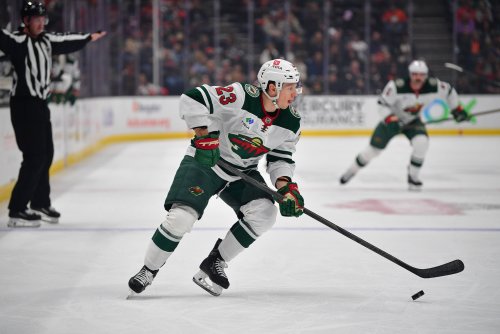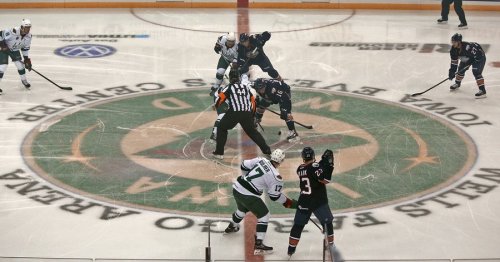
Cam Talbot’s 2021 season was a breath of fresh air for Wild fans in the net. Similar to the way Kaprizov, Zuccarello, and Fiala reminded us what create offense, playmaking, and exciting hockey look like, Cameron Thomas Talbot reminded the State of Hockey what professional hockey goaltending should look like. After suffering through the worst goaltending tandem in the league for 2019-20, how did the Wild’s starter grade out for 2020-21?
The Rubric
Season grades are a fun way to relive the drama of last year during the offseason, but putting a number on different players can be incredibly subjective. For example, should we grade the top pair defenders the same as the top line forwards? How do expectations for the starting goalie compare to a rookie backup in Kaapo Kahkonen (covered here by the illustrious Kyle Anway)? For this reason, I’ve created a reasonable framework for how to break down Cam Talbot’s 2021 grade:
This balance gives important weight to a reasonable sample size of regular season games, while still giving extra weight to the playoffs on a per-game basis. Besides the obvious value of playoff performance on the morale of fans, these were also played against stiff competition in the Vegas Golden Knights. Both of these sections will evaluate even-strength goaltending only, based on both advanced and traditional metrics.
Finally, since it’s been a sore point for the Wild PK for years, I’ve allocated a decent chunk to shorthanded goaltending. The goalie has to be your best penalty-killer, so that section is weighted more highly per-minute than even strength.
Regular Season Performance
Talbot’s regular season established him as one of the NHL’s starting goalies with the 19th-most games played and 16th-most 5-on-5 minutes. In this span, he faced the 14th-most shots on goal, the 14th-most unblocked shot attempts, and 19th-most expected goals against. According to MoneyPuck.com’s model, Talbot saw the 11th-most xGA. These are raw stats, not on a per-game basis, so these speak to a true starting goalie’s workload.
Talbot posted a .921 save percentage and a 2.63 GAA. Among the 66 goaltenders who played at least 10 games, Talbot posted a the 21st-best save percentage and the 24th-best GAA.
What this means is that Talbot’s workload was bottom half for an NHL starter, and his performance was among the top-25 goalies out of 66 eligible — around the 66th percentile.
Measuring Talbot with advanced stats, Talbot performed somewhat poorer than fans may expect based on what they saw. GSAx (Goals Saved Above Expectation) is a metric which estimates how many goals a goalie saved above or below the number he “should have” based on shot location. In a shortened season and with only 33 games played, these metrics are important because they tend to be more stable than traditional goaltending metrics such as sv% or GAA, and therefore are more true to the goalie’s actual performance.
At 5-on-5, Talbot gave up just a bit more than he should have, posting a minus-5.86 mark per Evolving Hockey. Per MoneyPuck’s xG model, Talbot was slightly better, posting minus-2.2 GSAx. These numbers put Talbot somewhere between the 30th and 40th-best goalie in the NHL among the 66 eligible goalies.
This implies that, over the regular season and at 5-on-5, Talbot needed a bit of help from his defense to be above-average. Overall, he was an average starter with the defense “baked in.” On the other hand, Talbot ranked 15th in Goals Above Replacement, at even strength — likely based on a combination of average-ish play on a heavy workload.
Over the past four seasons, Talbot played more total minutes and started more games this year than any other regular season besides 2017-18, when he was the starter for the Edmonton Oilers. In a shortened season, that’s insane. In spite of that, Talbot posted his highest GAR totals on a per-game and per-minute basis. He also posted his best sv% of the past three years besides last year in Calgary, which was a nearly identical .918 to this year’s .914. You can see Talbot’s sv% drop as the year goes on in the graph I created below — the red line is a five-game rolling average of sv%.
Talbot had his best year among the past three seasons in spite of starting more games than he had in any of the other two seasons. Returning to a starting role actually hurt him in his raw sv%, which can be seen in the graph above as fatigue affected him later in the season. While playing in front of a solid team buoyed his advanced stats this year, it also did so last year in Calgary, so you have to think that’s part of the expectation from GM Bill Guerin given how quickly they pursued him in free agency.
Taking into account all of this information, Talbot performed to management’s expectations based on the team in front of him and posted a great year in metrics which grade his overall performance. I give Talbot a C+ for the regular season.
Playoff Performance
For anybody who saw playoff Talbot this year, you know he looked like a different Caminal. While he was steady if underwhelming in the regular season, Talbot’s playoff performance was exceptional by the eye test. He was always there for a big save and carried the Wild through several dreadful periods to keep them in games against the formidable Golden Knights.
That last one to rob Reilly Smith on the feed from Jonathan Marchessault is easily my favorite. While the Wild went on to lose that game, it was actually one of the team’s best games all series in the scoring chances battle, and a big save like that kept the game close going into the second period. Talbot manufactured these kinds of saves over the entire seven-game series.
Of the 22 goalies to play a playoff game so far in 2021 (Carey Price and Andrei Vasilevskiy MTL and TBL have yet to finish the Stanley Cup Final), Talbot was 15th in sv% and 13th in unblocked shot attempt sv%.
These aren’t stellar, but they don’t account for Talbot’s workload. While the Wild’s defense was great in the regular season, they gave up lots of high-danger chances to Vegas. This shows through in expected goals — Talbot faced the 12th-most xG per TOI and the 8th-most per game, and he did it over the course of seven straight games in 13 days. Craig Anderson (Washington Capitals), Spencer Knight (Florida Panthers), and Petr Mrazek (Carolina Hurricanes) faced higher workloads in both statistical categories while playing only two games each. So, Talbot has probably had a top-5 playoff workload on a per-night basis.
In spite of this heavy workload, Talbot posted a minus-.14 GSAx — essentially performing at a perfectly average level. That’s really solid. The only goalies outpacing him in that stat with a higher playoff workload would be Vasilevskiy and Price, who have started every game of their teams’ playoffs. The workload-to-results ratio is close to Boston’s Tuukka Rask, and Vegas’s Marc-Andre Fleury (higher than Semyon Varlamov of the New York Islanders, who was spelled seven games by backup Ilya Sorokin).
Of 22 playoff goalies, I’d say Talbot was top-5. That’s the 77th percentile. Keep in mind that only the best 16 teams are even eligible for the playoffs.
For this reason, I give Cam Talbot an A- for playoff performance.
PK Performance
Among goalies this year, Talbot faced the 15th-most shorthanded minutes. This broke down to 150 minutes of 4v5 and 2 minutes of 3v4 (miraculously, Talbot never played in a 3v5 situation this season). For this reason, all following stats will be based on on 4v5 situations.
66 goalies faced 5v4 and played at least 10 games this season. Talbot faced the 13th-most 4v5 minutes all year, and the 20th-most 5v4 minutes per game. Across this time frame he faced only the 39th-most xGA per minute. Over this workload, He posted the 28th best save percentage and saved xG at essentially an average level. Talbot gave up 16 goals across these 150 minutes. In goals-allowed per 60, this works out to 35th-best.
Finally, lets review evolving-hockey’s advanced advanced stats. Talbot racked up 1.5 GAR over his shorthanded minutes. That’s 26th-highest among 66 qualifying goalies. For your starter, you’d like that number to be closer to ranking in the teens. However, there’s a case to be made that this number is too low.
Talbot’s shorthanded RAPM chart is shown above - it’s a visual breakdown of his performance at shorthanded compares to the team’s on a per-minute basis. While it appears that he performed worse than the expectation based on team defense (left bar), keep in mind that Wild goalies have consistently underperformed expectations based on EH’s estimate.
What’s really important to note here is that Talbot’s performance in the three metrics to the right side of the graph were average. While this doesn’t sound amazing, let’s compare this to the Wild’s goaltending performance in the past two seasons.
Kaapo 2021:
Duby 2020:
Stalocktopus 2020:
Dubnyk 2019:
Stalock 2019:
Every single goalie underperforms expectation on the Wild PK, probably because the Wild aren’t your average PK team. Statistical models may be overestimating how good the Wild’s skaters and PK system are. But, if you compare the charts, Talbot is the only one to perform at an average level in the three bars on the right since Dubnyk’s stellar 2019 PK performance, which was based mostly on the best PK efforts by the Wild’s skaters over the last three seasons. He also out-performed rookie Kaapo Kahkonnen in the advanced stats. It’s only a sample size of 6, but Talbot is among the top two and arguably has the best of all 6.
Talbot’s basic stats appeared pretty average on the PK, and I’m generally willing to accept these at face value. However, there is a small amount of evidence that the model is underestimating this performance based on the Wild’s PK system. For this reason, I’ll give Talbot's PK efforts a B.
Final Grades
All that’s left now is to plug these grades into excel:
This works out to something between a C+ and B-. That’s solid - just above a C average. That feels a bit low, probably because it’s mostly based on a mediocre regular season that took a dive later in the year due to a tough workload. So, let’s give some extra credit here.
Final Grade: B
Think you could write a story like this? Hockey Wilderness wants you to develop your voice, find an audience, and we'll pay you to do it. Just fill out this form.









Recommended Comments
There are no comments to display.
Join the conversation
You can post now and register later. If you have an account, sign in now to post with your account.
Note: Your post will require moderator approval before it will be visible.